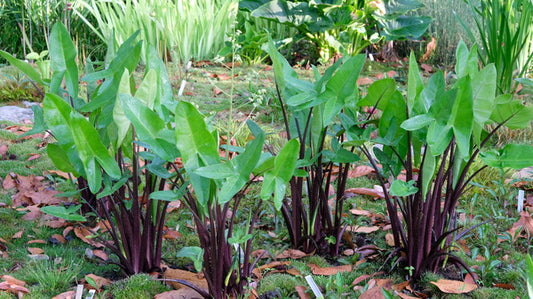Peltandra is easy to grow from Maine to Florida, tolerates sun or shade, and is deer resistant. Peltandra (Arrow Arum or, as the Algonquin called it, Tuckahoe) is a small genus of aroids for the bog garden. They are similar in appearance to a dwarf elephant ear.
-
Peltandra virginica 'Purplicious'
Item #: 12164
Zones: 5a to 9b
Dormancy: Winter
Height: 24" tall
Culture: Sun to Part Sun
Origin: United States
Pot Size: 3.5" pot (24 fl. oz/0.7 L)
Regular price $27.00Regular priceUnit price per
More Information About Peltandra
Those of you who are into ethnobotany or historical plants or unusual edible plants may be interested to know that Native Americans would boil peltandra rhizomes (to remove calcium oxalate), then dry and grind them into flour (in a manner similar to the way that Pacific Islanders cook and eat taro root) or they would dig a trench, lay the rhizomes in it and build a fire on top of them which would render them into something like a baked potato. Peltandra seeds can also be eaten if they are cooked for several hours and they supposedly are midly sweet. According to the PPAF database, if the cooked seeds are dried and ground into flour, they can be made into something similar to cornbread with a strong flavor of chocolate. Yum!
Growing and Caring for Peltandra
Peltandra is easy to grow from Maine to Florida, tolerates sun or shade, and is deer resistant. Some folks may find it to be a bit too fecund for their gardens but it spreads slower than Sagittaria, a similar looking bog plant. In the deep south, Peltandra is evergreen but for everyone else it is deciduous. Peltandra is a summer blooming plant whose small green or yellowish flowers produce little berries that float on water and are a popular food source for ducks and turtles (the source of yet another common name... Duck Corn).




